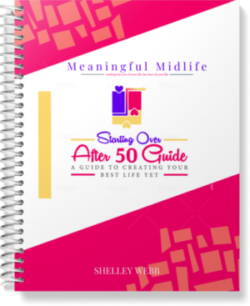Medical Alert Systems Aren’t Just for Home-bound Seniors Anymore
 When you hear the phrase, “medical alert system,” what comes to mind?
When you hear the phrase, “medical alert system,” what comes to mind?
If you’re like most people over 40 years old, the first thing you think of is the old Life Alert commercial from the 1980s featuring an almost helpless elderly woman saying, “I’ve fallen and I can’t get up.”
Times have changed. But the perception of medical alerts hasn’t.
That’s party because most of the systems on the market today are almost exactly the same as they were in 1985. They still work by connecting to your regular land-line telephone. They still have a base station with a speakerphone that supposedly lets you talk and listen from anywhere in the house. They still have a large rechargeable battery to keep the system running during a power outage. They still have the same effective but unattractive help buttons you wear on your wrist.
And they still serve the same core customer segment: elderly people who are basically housebound and spend their lives within talking range of the base station.
But today’s new crop of medical alerts isn’t just for the helpless and isolated.
Instead, they’re catching up (slowly) with the lifestyles of today’s seniors.
Not just inside the home
One of the biggest problems with old-style medical alerts is that they don’t protect you very well if you’re outside. If you fall while puttering in your detached garage, or while taking out the garbage, or while gardening, the system still “works,” but not as well as you want it to. Most systems have a range of 600 feet or more, but that’s just for the button activation. If you’re outside, you can’t hear what the emergency responders are saying and you can’t tell them what’s happened. Sure, they’ll send an ambulance, but maybe all you needed was for a neighbor to come over and help you back to your feet.
A couple of companies have built products to address these needs. Both have created emergency pendants that are basically tiny cordless phones. You can press the button anywhere within approximately 600 feet of the base unit and it will dial for help. So far that’s just like the old systems, but the cordless phone functionality lets you have a non-shouting conversation with the person who answers.
Your two options are the Medipendant, if you want a system that dials a professionally-staffed monitoring center, or the units from LogicMark if you want a system that automatically dials friends and family (a “no-fee” alert).
Protection anywhere
The other major advancement in medical alert technology is the wave of cellular-based systems that are hitting the market.
Some cellular medical alerts are just old-style base station units that don’t need a land line. Same functionality, same drawbacks, but they connect via cell rather than telephone wires for all those people who no longer have wired service from the phone company.
But the more interesting options are the true cellular medical alerts. These are basically small cell phones that dial a restricted set of numbers. Some are meant to be used with a monitoring center and others allow you to call a limited list of friends and family, or 911.
With these units, you can call for help pretty much anywhere you can get a cell signal. But they aren’t a good option if cell service at your house is spotty. And remember that although “protection anywhere” is very tempting, there are many times, for example at the grocery store, when you don’t really need a medical alert because there are people around who can help you.
What’s the advantage over just carrying a cell phone?
First, all you have to do is press the emergency button and you’re connected. No need to navigate the phone and dial a number. Second, the units are designed to have better battery life than cell phones and to be easier to carry, so they’re with you and functional when you need them.
But it’s a little bit of a Wild West in this part of the market. You’ll find a lot of different options, but not all of them are well designed. In my experience, some of the worst products are the most expensive and some of the best are the cheapest.
How to choose
A lot of people look for a medical alert by searching online and then trying to compare products. It gets confusing fast.
What I recommend, instead, is that you take the time to really understand your needs. How active is the senior? Where do you see the biggest risks? Will they be unwilling to wear an emergency button that’s not stylish? Will they be unwilling to carry the two-way-communications pendant? Are they too forgetful to remember to carry their unit?
Once you’ve identified your needs, your search will be a whole lot easier.
About the author
Joe Thoron started researching medical alerts after watching a family member make a snap decision to buy a medical alert, and end up locked into a long-term contract for the wrong system. His website helps people like you find the right medical alert system and avoid the 5 most common medical alert mistakes.
LEARN TO LOVE YOUR LIFE AGAIN
 Do you feel like you need to hit the REFRESH button on your life? Download our free guide and begin to create your best life yet!
Do you feel like you need to hit the REFRESH button on your life? Download our free guide and begin to create your best life yet!


